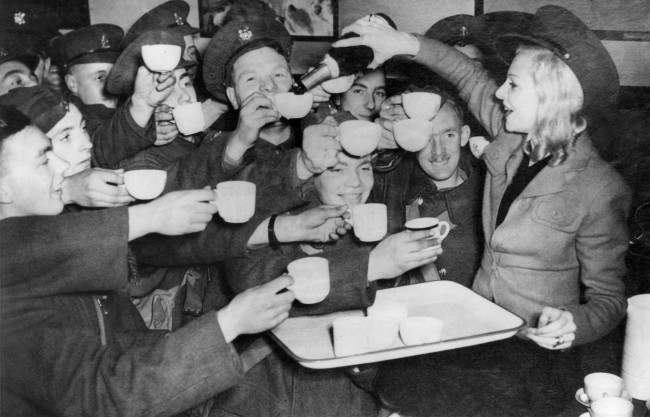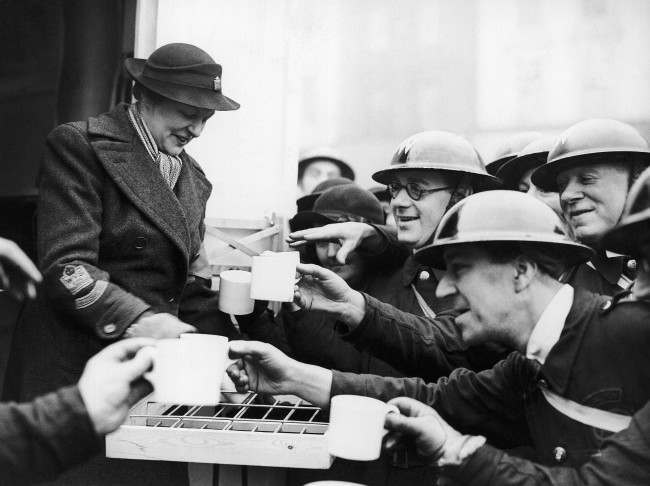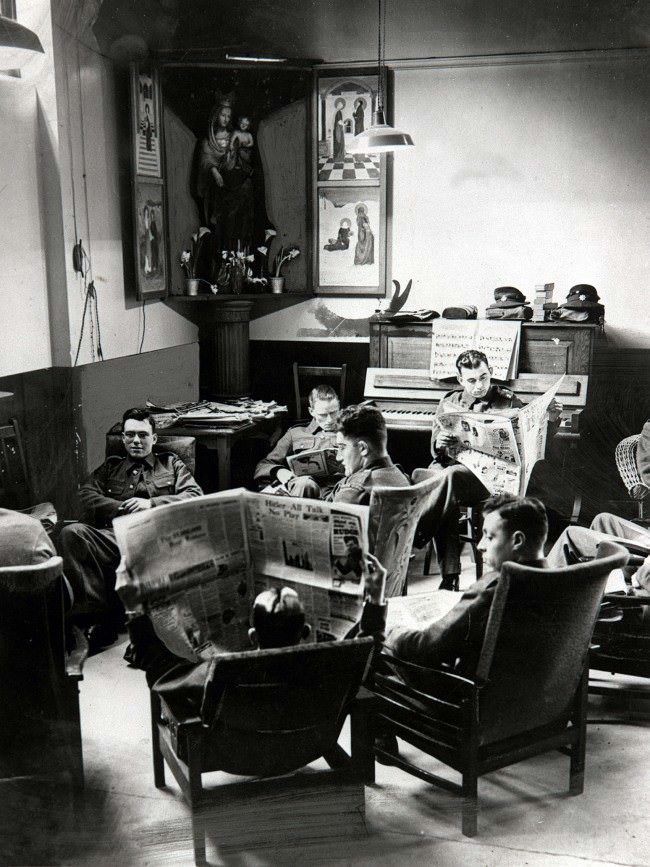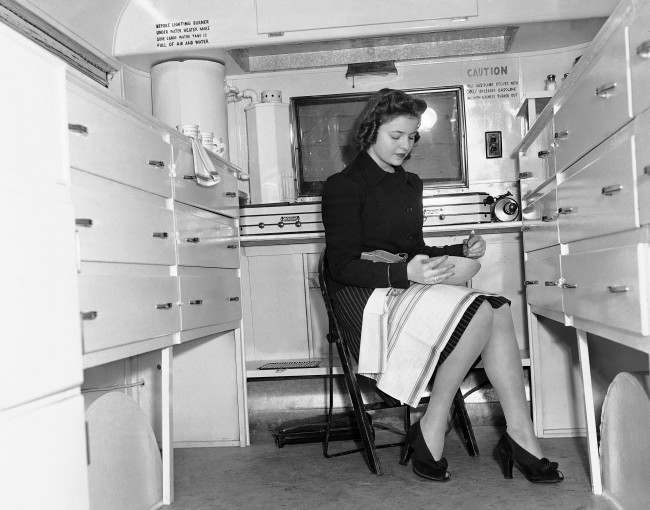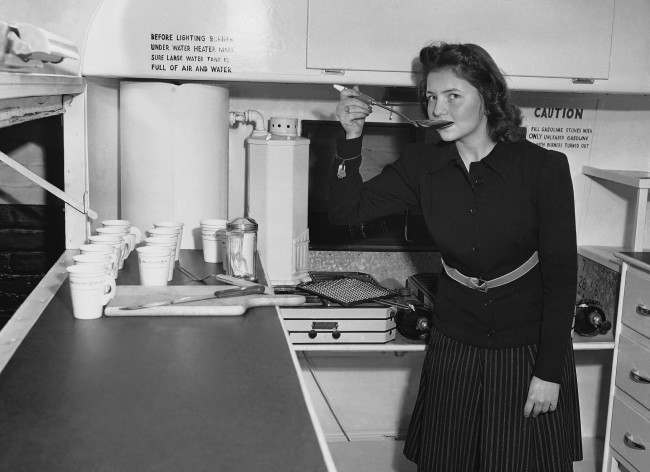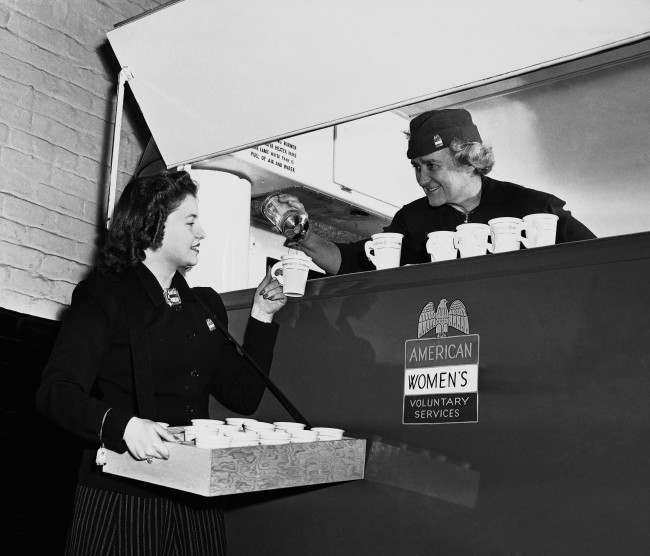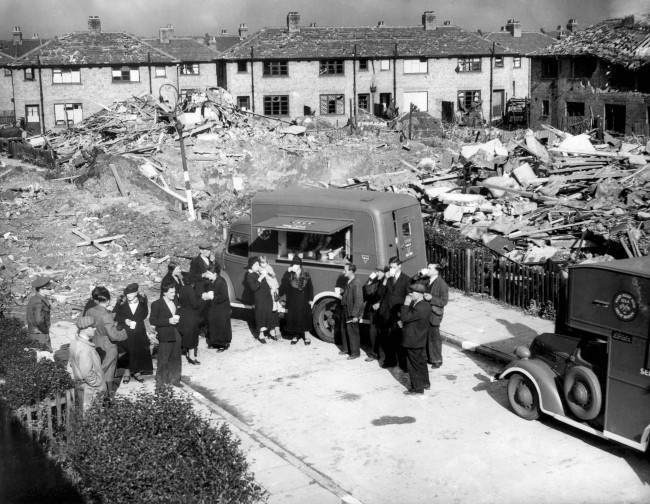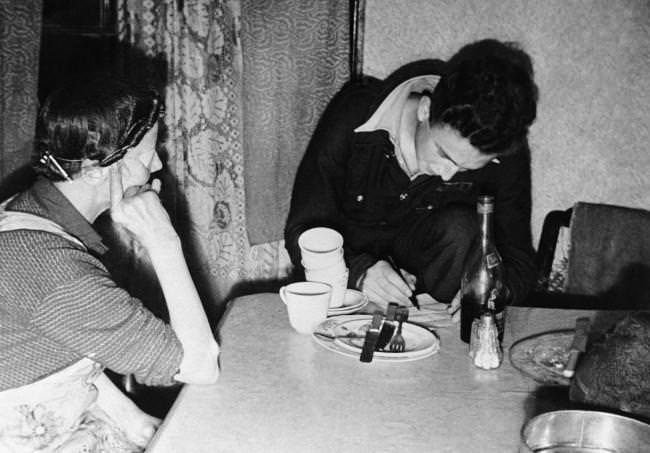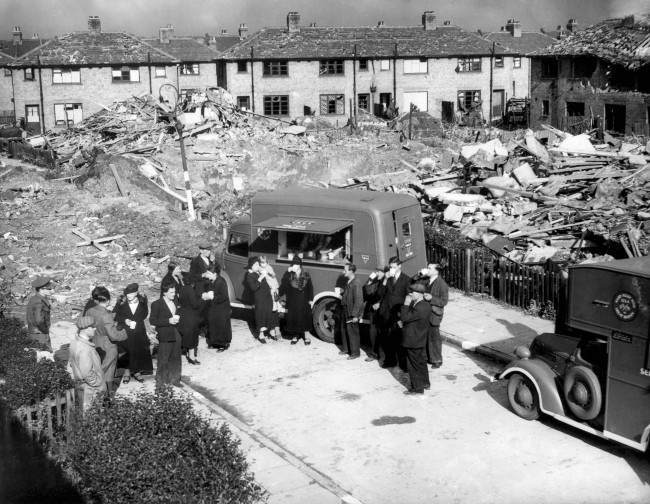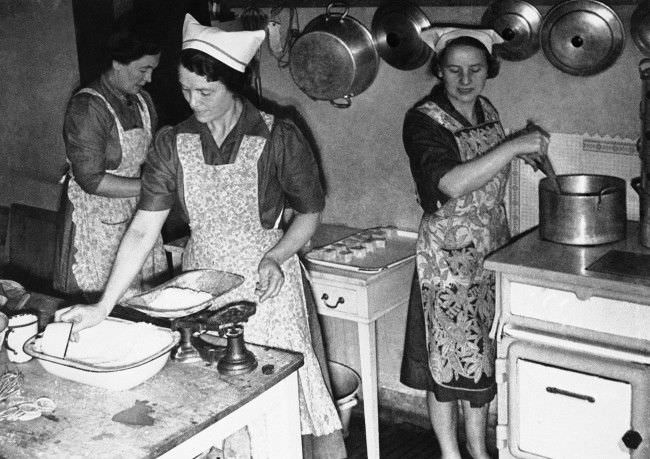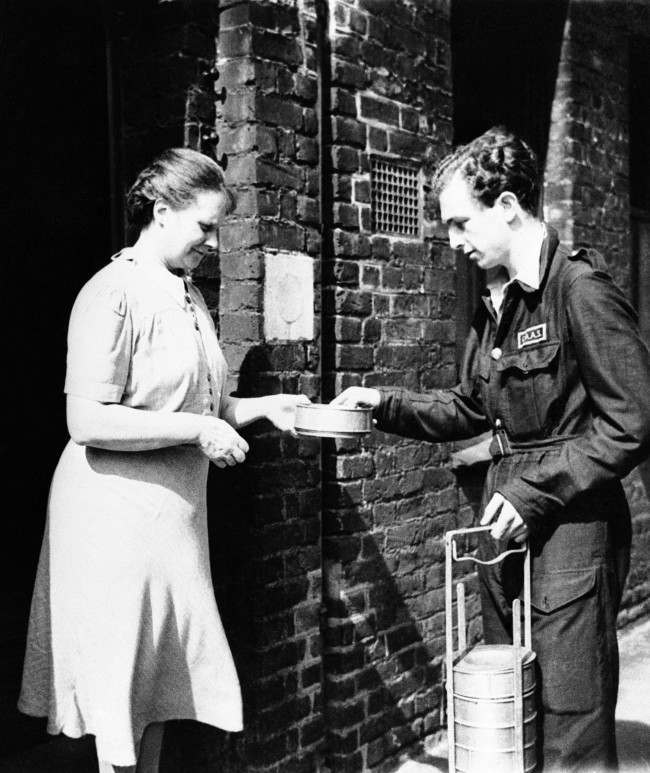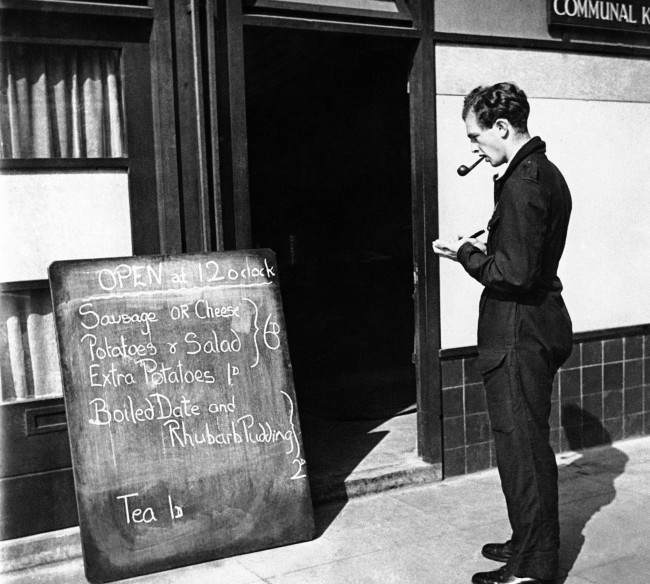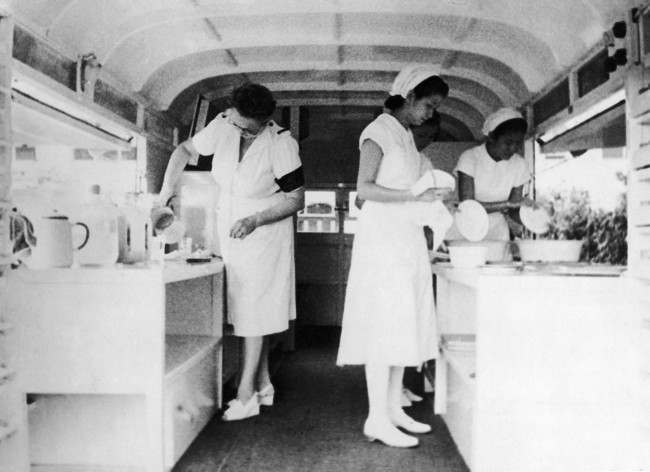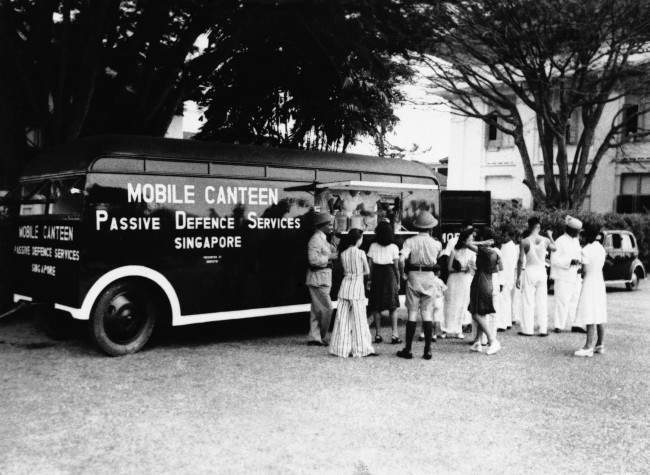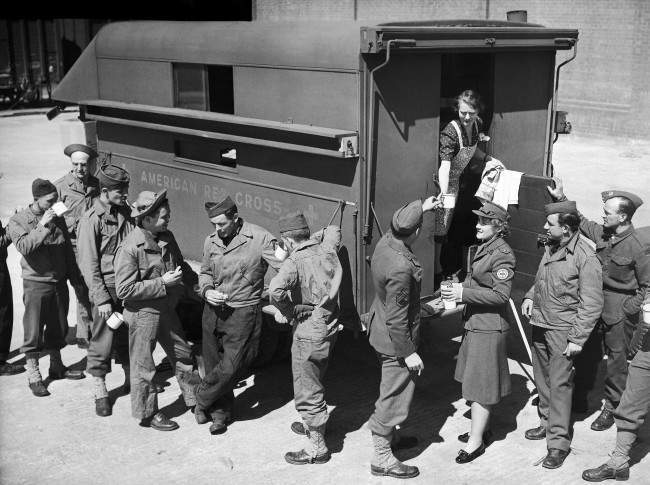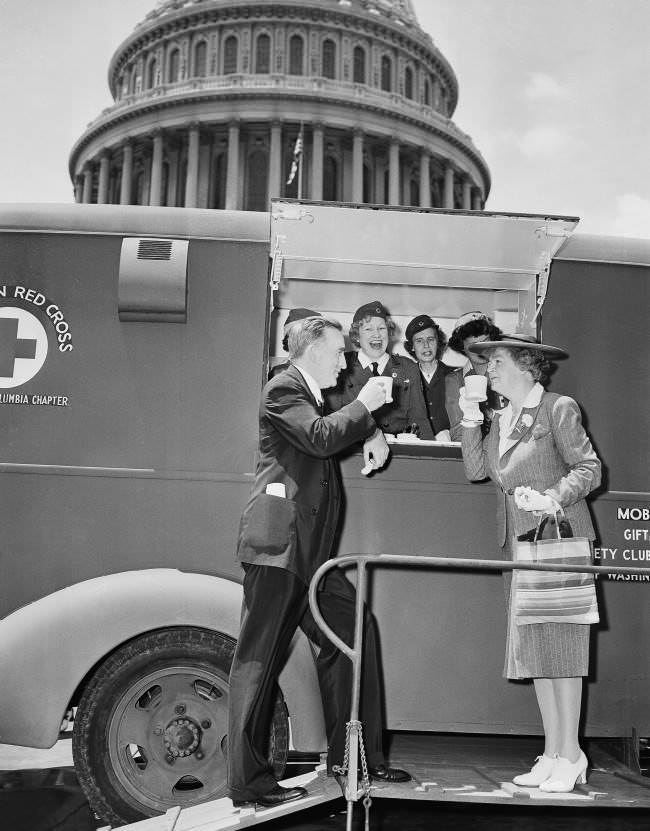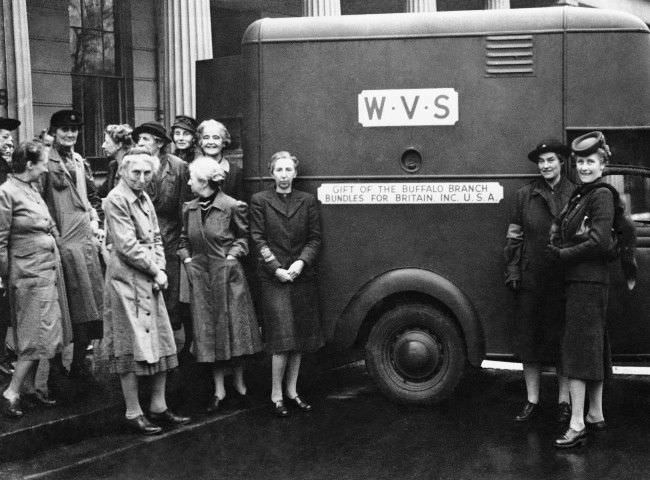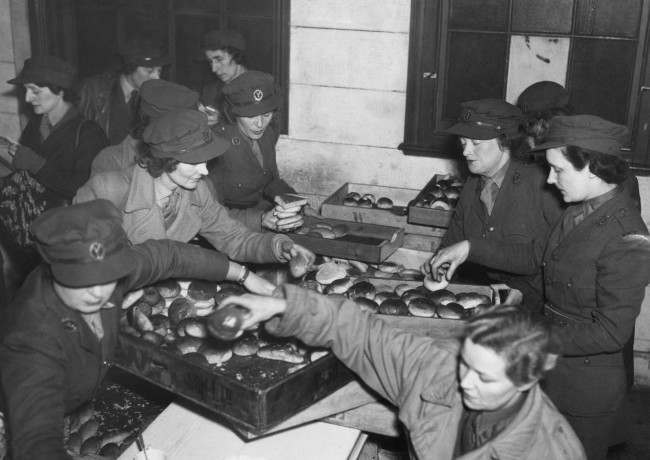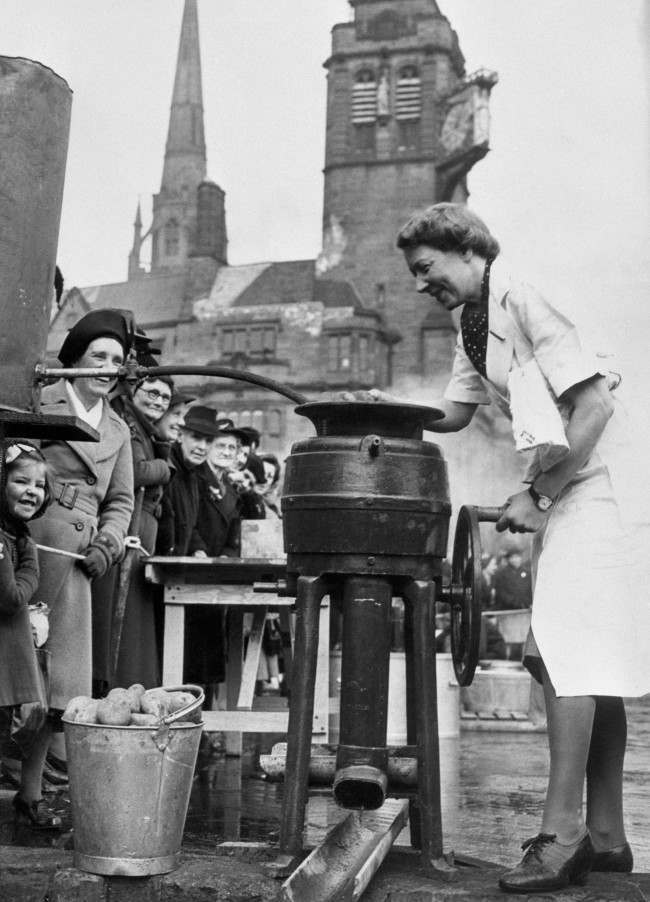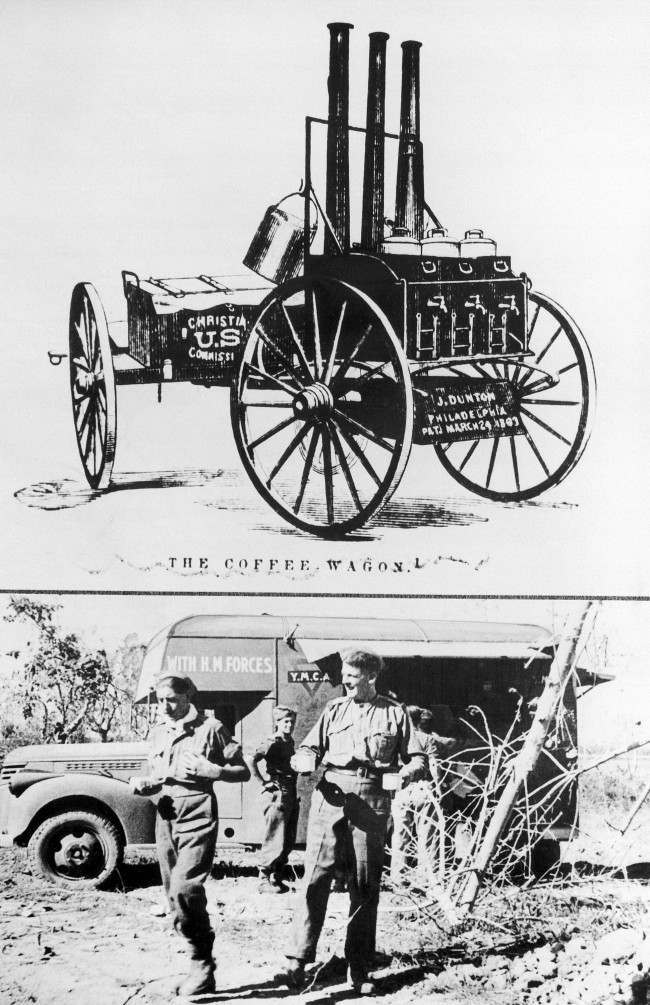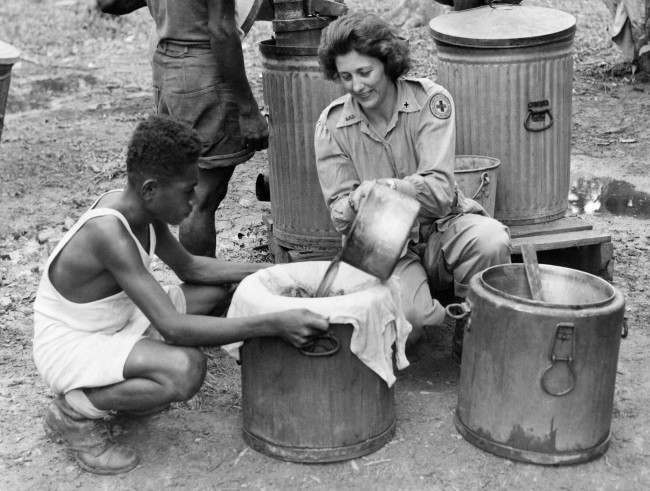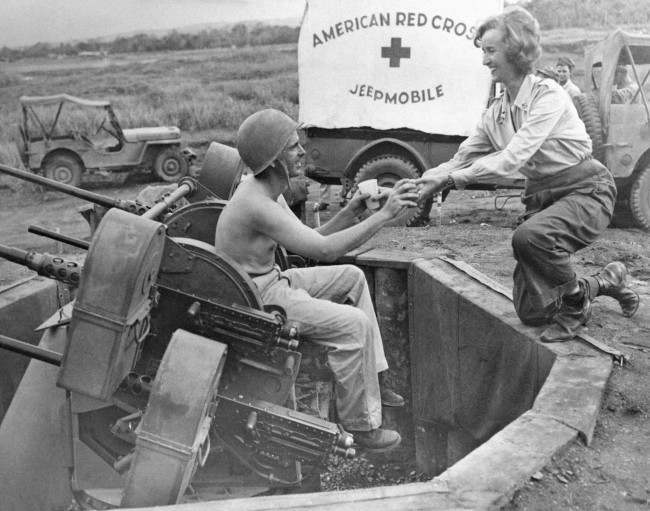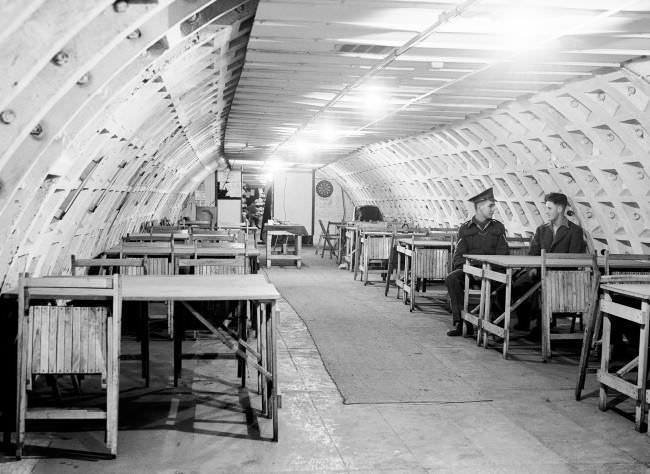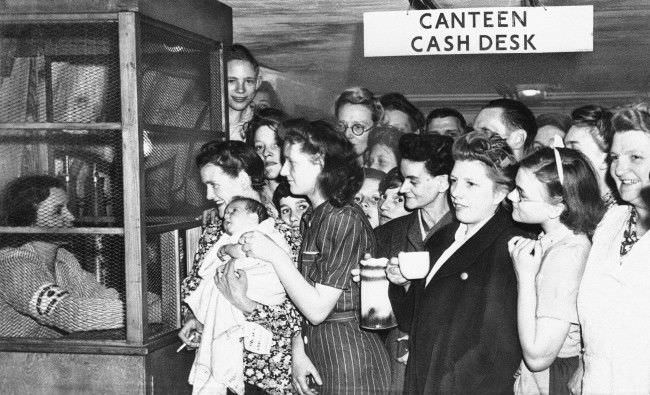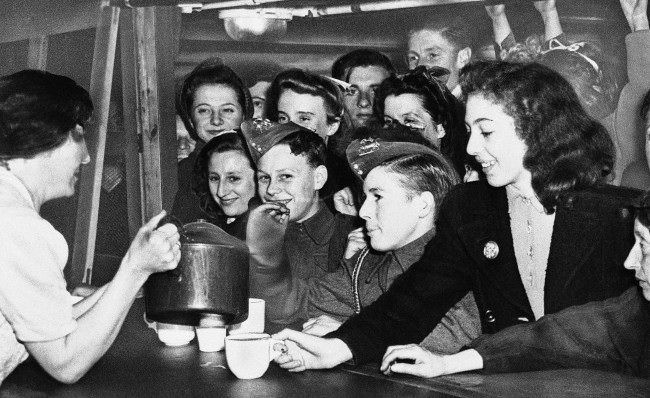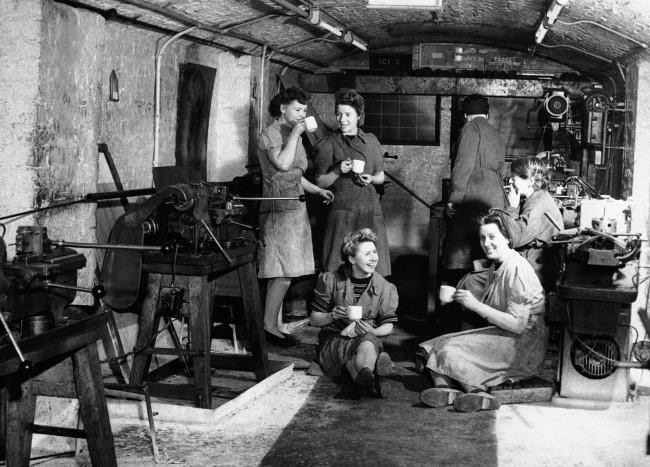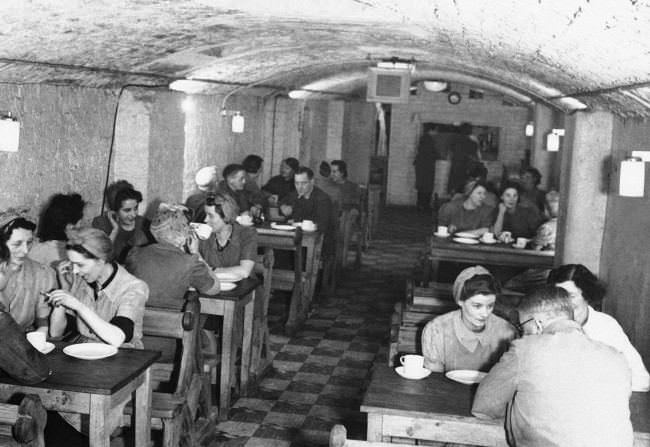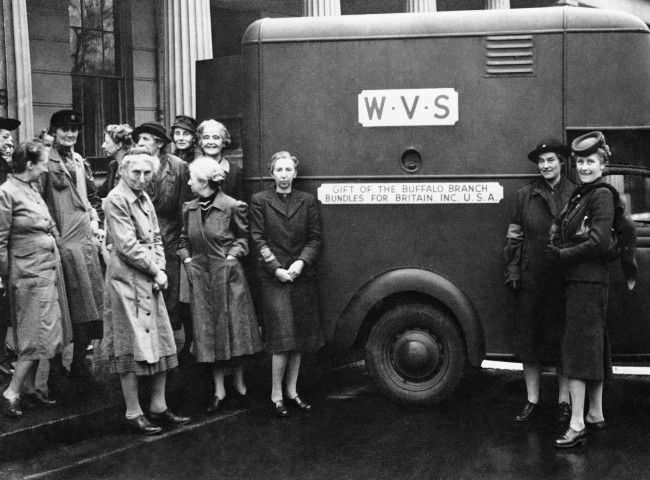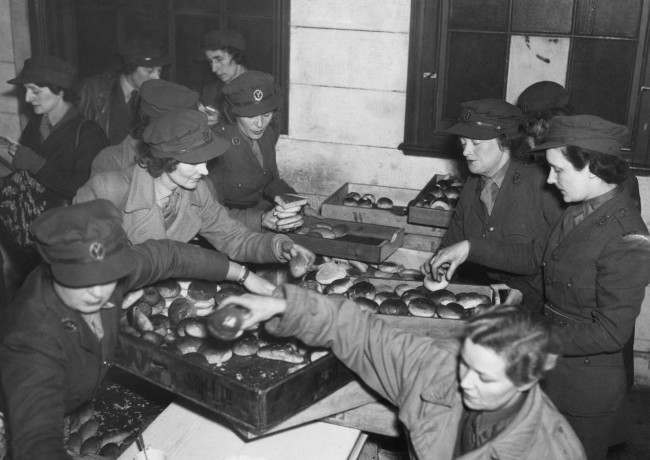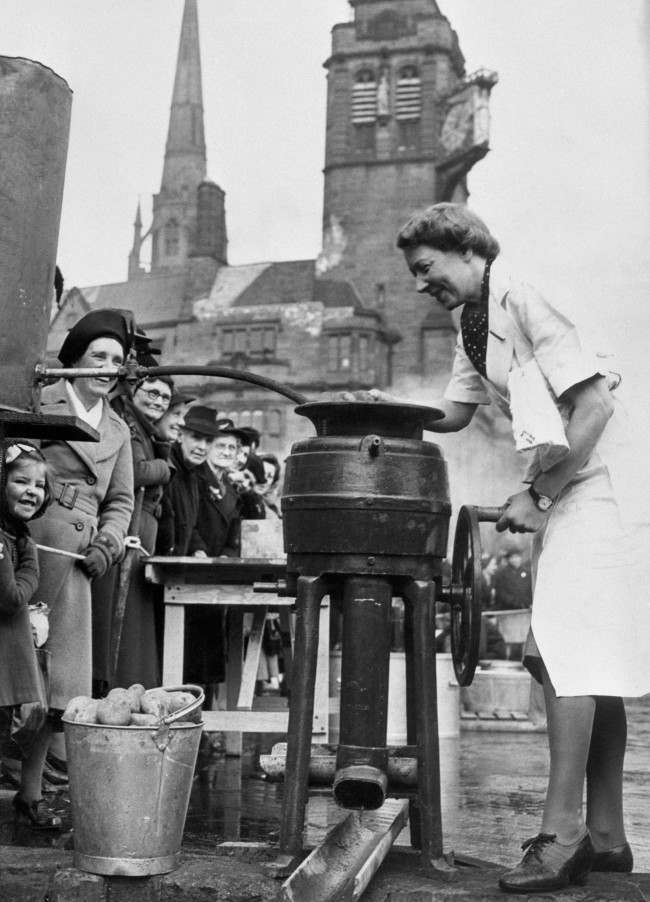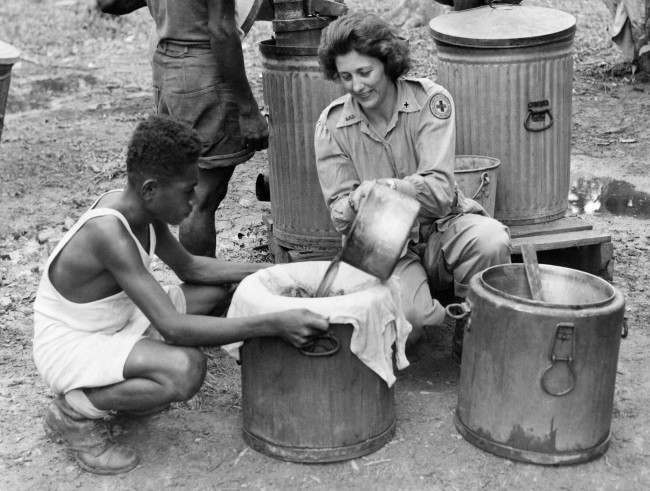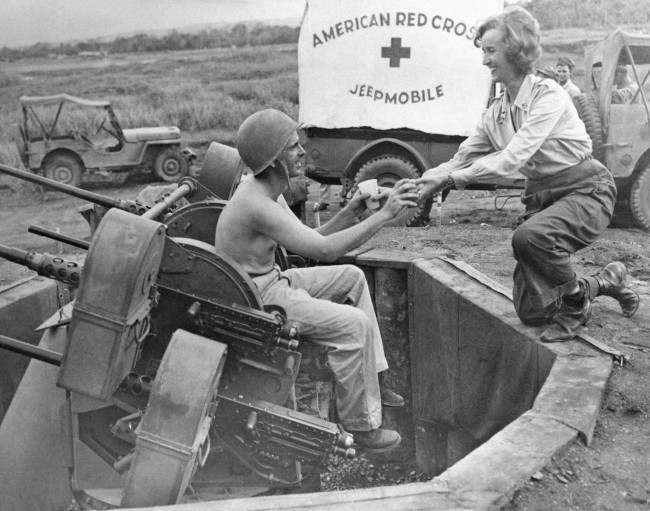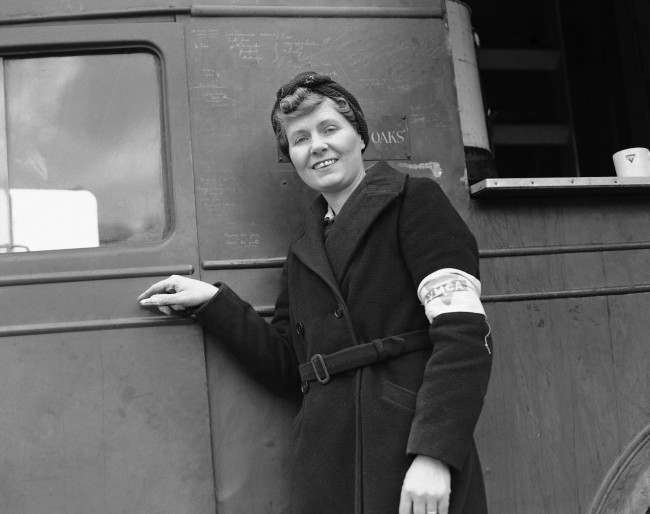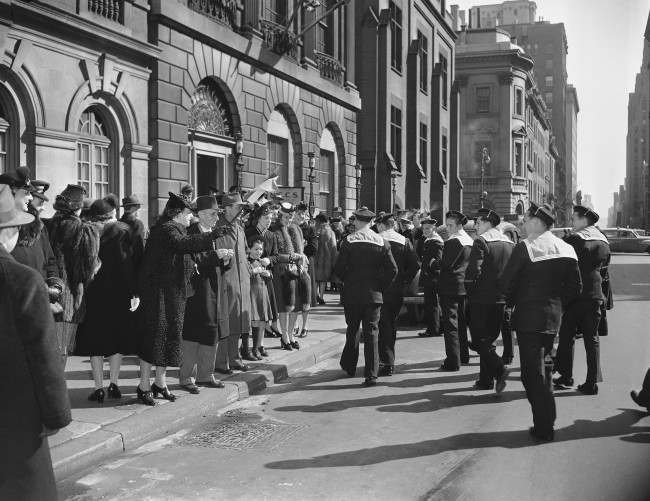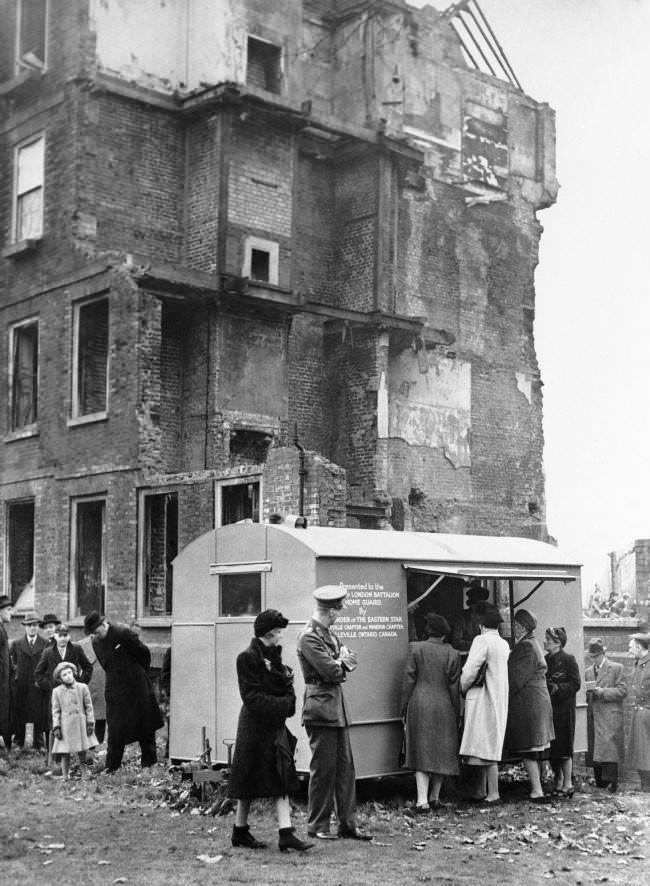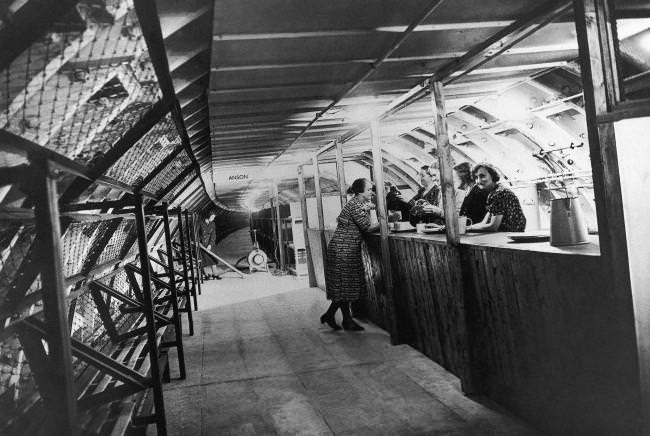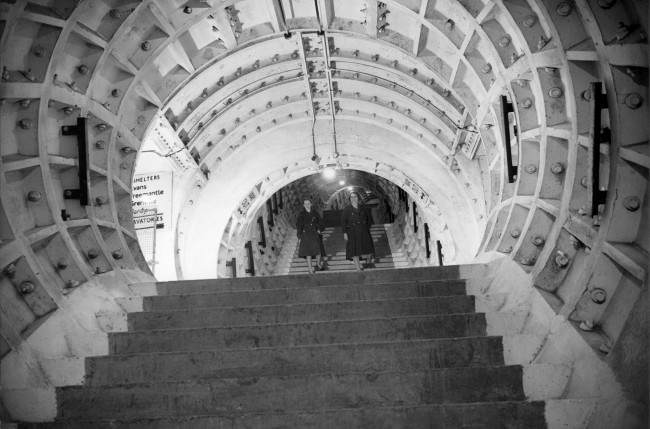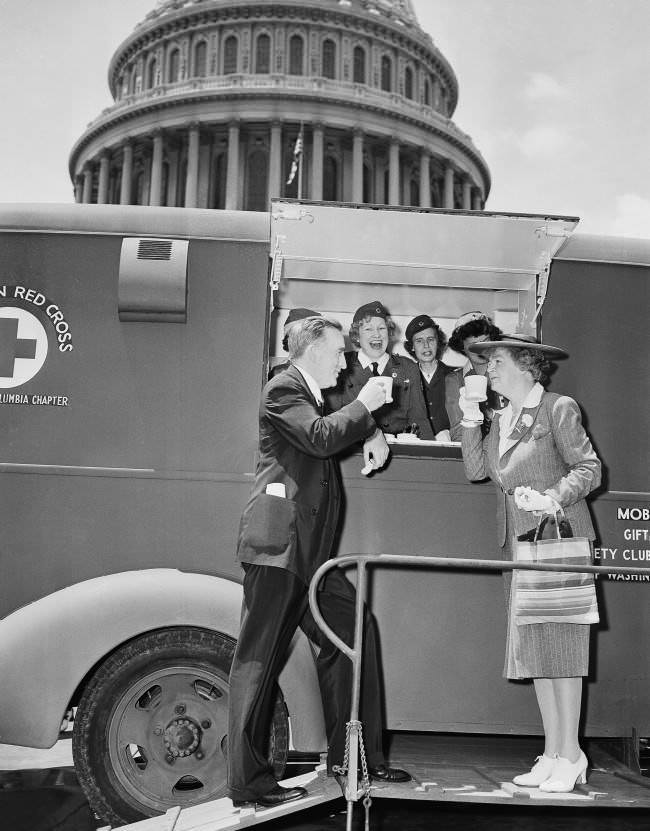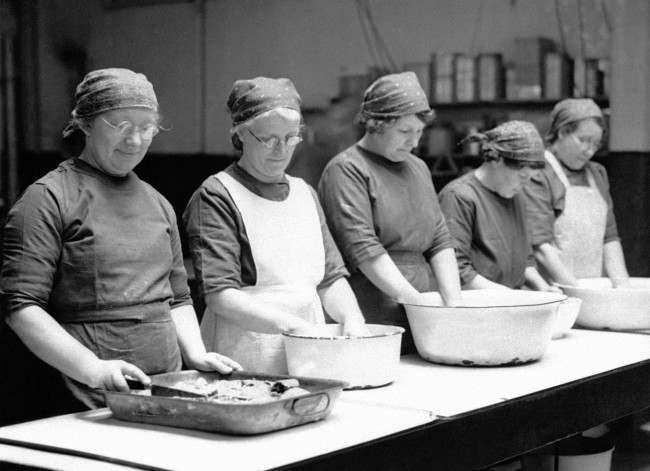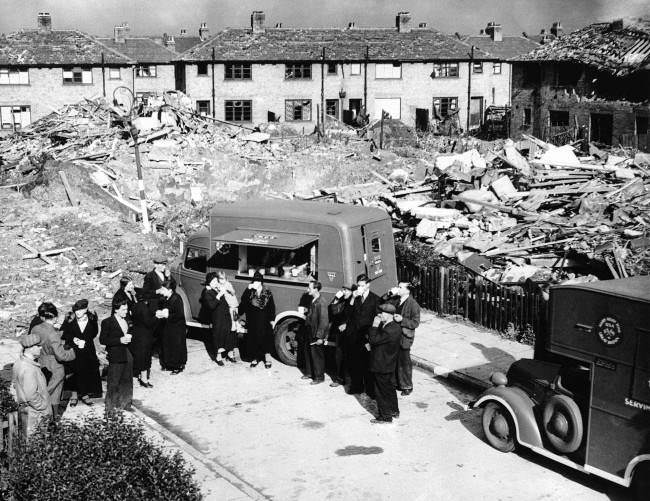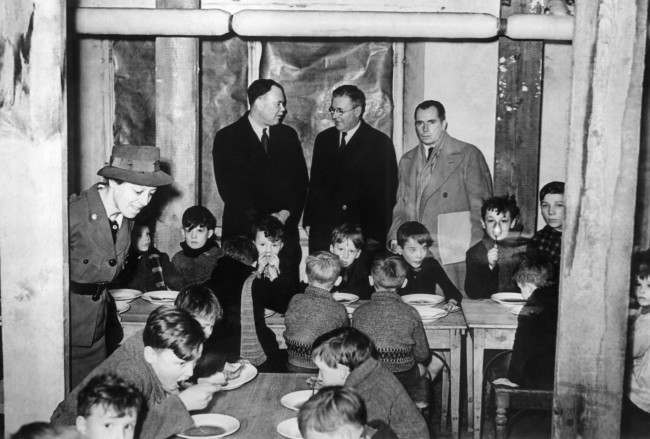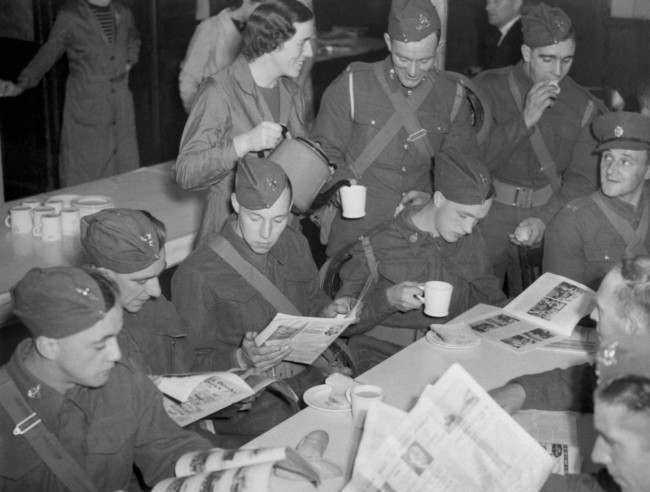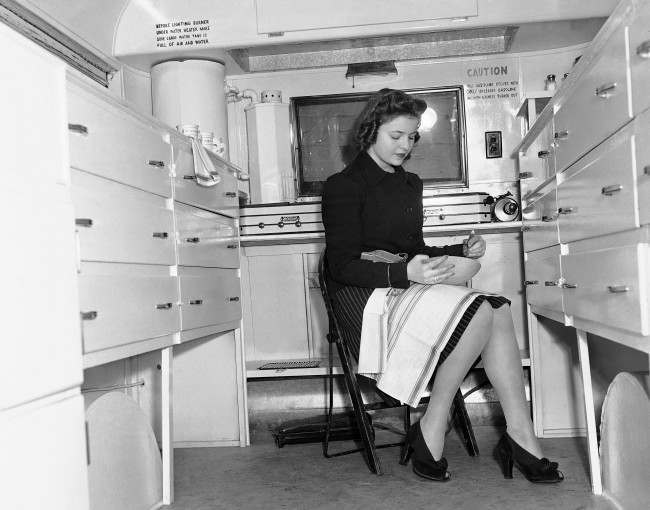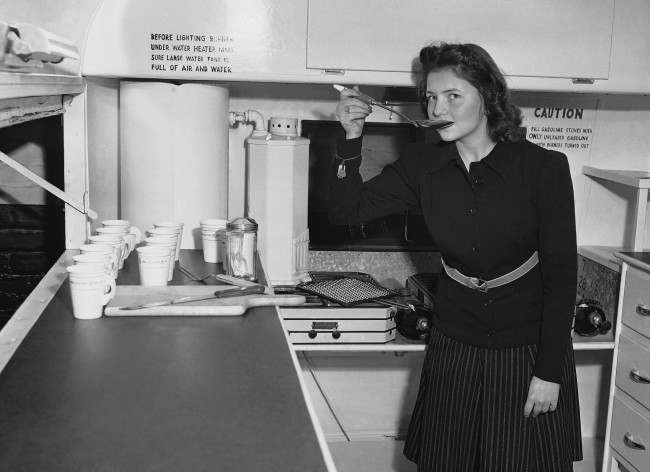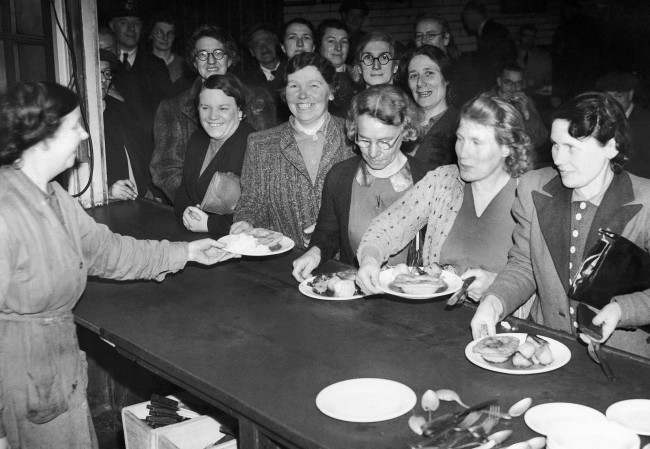During World War II, soldiers faced many challenges, from harsh weather to fierce battles. However, one of the most important aspects of their daily lives was food. Soldiers needed to eat to stay strong and focused. This is where mobile canteens came into play. These canteens provided meals and comfort to soldiers in the field. They served not just food but also a sense of normalcy amid chaos.
What Were Mobile Canteens?
Mobile canteens were vehicles that brought food, drinks, and supplies to soldiers on the front lines. They were often trucks or vans equipped to prepare and serve meals. These canteens traveled to different locations, allowing soldiers to grab a quick meal or drink without having to go far from their posts.
The idea behind mobile canteens was to ensure that troops received hot meals, snacks, and beverages, even in the most remote areas. Food was essential for maintaining morale during the war. When soldiers had access to good food, they felt better and more energized.
The History of Mobile Canteens
The concept of mobile canteens was not new by the time World War II began. During World War I, similar services were offered, but they were not as organized or widespread. As the second World War approached, military leaders recognized the importance of food in boosting morale and keeping soldiers healthy.
Read more
In the United States, the Red Cross and various volunteer organizations began to set up mobile canteen services. These canteens were often staffed by volunteers who wanted to support the troops. They provided hot meals, coffee, and snacks. The American Red Cross even had a program called the “Canteen Service” that aimed to serve soldiers wherever they were stationed.
In Britain, the Women’s Voluntary Service (WVS) played a significant role in the mobile canteen effort. Women volunteers drove trucks filled with food and drink to soldiers in various locations. They provided not only meals but also a friendly face and a moment of comfort.
Types of Food Offered
Mobile canteens served a variety of food items. The menu often included hot meals like stew, soup, and sandwiches. Soldiers could also enjoy coffee, tea, and other beverages. Desserts like cookies or cakes were sometimes available, adding a sweet touch to their meals.
The food served in mobile canteens was often simple but nutritious. The goal was to provide energy and comfort. Soldiers appreciated the chance to sit down with a warm meal, even if it was just for a short time. Sometimes, mobile canteens would serve meals that reminded soldiers of home, which helped lift their spirits.
The Importance of Morale
Food plays a crucial role in keeping morale high. In stressful and dangerous situations, having a meal can provide a sense of normalcy. Mobile canteens offered soldiers a break from combat. They could relax, enjoy some food, and chat with their fellow soldiers.
Many soldiers later recalled these moments as some of the best parts of their day. A hot meal and a friendly conversation could make a huge difference in their spirits. Even in the toughest times, these meals helped create a sense of camaraderie among soldiers.
#1 Miss Claire Luce, right, well known British Actress, served champagne to the British Tommies who flocked into the canteen she opened under the name of St. Peter’s kitchen at St. Pancras station in London on Nov. 7, 1939.
#2 Mrs. Montagu Norman, the wife of the governor of the Bank of England, handing out tea to the A.R.P. workers after she had opened the canteen at Islington Town Hall, Jan. 15, 1940.
#3 The Catholic Women’s League maintain a canteen and recreation for members of H.M. Forces in St. Peter’s Hall in Westminster Cathedral Yard in London for troops to enjoy a spell of comfort, 1939
#4 A woman works in a mobile Kitchen, Feb. 15, 1941.
#5 A woman works in a mobile Kitchen, Feb. 15, 1941.
#6
#7 Americans who have answered Lord Woolton’s appeal to London caterers for hot food and drink for air raid victims by giving fifty mobile canteens through the allied relief fund, have now decided to increase this fleet of mobile kitchens to 100 vehicles.
#8 Christopher Ounsted, driver of the mobile canteen, takes the order for a days meal from a woman who is partly blind in London on Sept. 17, 1941.
#9
#10 Voluntary workers in the communal kitchen preparing meals, some of which will be eaten by employees in nearby factories in London on Sept. 17, 1941.
#11 Christopher Ounsted, driver of the mobile canteen, delivering a hot dinner to a woman during his rounds in London on Sept. 17, 1941. The canteen, a gift from the U.S., would be idle normally, as a result of the lull in the blitz, but it is put to use to feed the poor, aged and homeless.
#12 Christopher Ounsted, volunteer driver of the mobile canteen, stops at a communal kitchen to copy the days menu prior to starting out on his day’s rounds in London on Sept. 17, 1941. He presents a list of the food available to the people he visits, permitting them to make a selection.
#13 European and Chinese canteen girls serving in a mobile canteen given by a civilian to the Singapore Passive Defense Services in, Jan. 31, 1942.
#14 This mobile canteen carries food and refreshments throughout Singapore now under fierce Japanese attack shown Feb. 11, 1942. It is operated by European and Chinese girls as part of the passive defense services there.
#15 A convoy of new lorries was driven entirely by A.T.S. personnel from a Bedfordshire factory to a Gloucestershire R.A.S.C. depot.
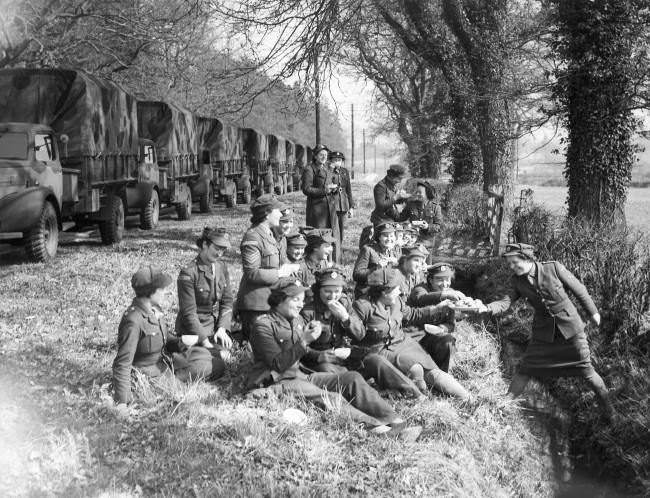
Their 100 mile journey was broken by a ‘pause for refreshments at the mobile canteen sent from H.Q. to meet the convoy, March 25, 1942. A halt on the way during the passage of the convoy-and the A.T.S. girls enjoy an Al Fresco lunch at the roadside in a picturesque setting while their lorries are lined up behind.
#16 An all-Norwegian Fighter Squadron equipped with Spitfires is now flying with the Royal Air Force.
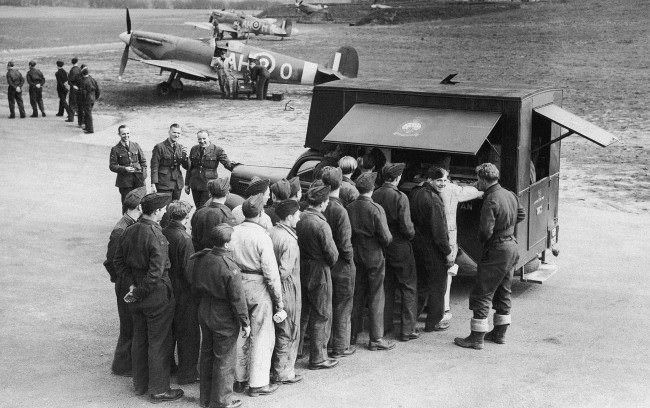
It has been in action since March this year and is doing fine work. Many members of the Squadron can tell thrilling stories of their escapes from their native country to take up arms again in Britain. The Norwegian Air Force, which is commanded by Rear Admiral Hjalmar Riiser-Larsen, the famous explorer, is trained in Canada, and then comes to this country for final training and to take up operational duties. Men of the Norwegian ground staff line up for refreshments at the mobile N.A.A.F.I. canteen in the Spitfire dispersal area, May 18, 1942.
#17 An American Red Cross mobile canteen on the quay of a Northern Ireland port furnishes hot coffee for some of the American soldiers who landed there with the largest A.E.F. of the current war, May 27, 1942. The uniformed Red Cross worker is Miss Louisa Farrand of New York City.
#18 Crowds inspect the 14 mobile disaster units dedicated to the Red Cross in New York, June 27, 1942, by the Masons of New York state.
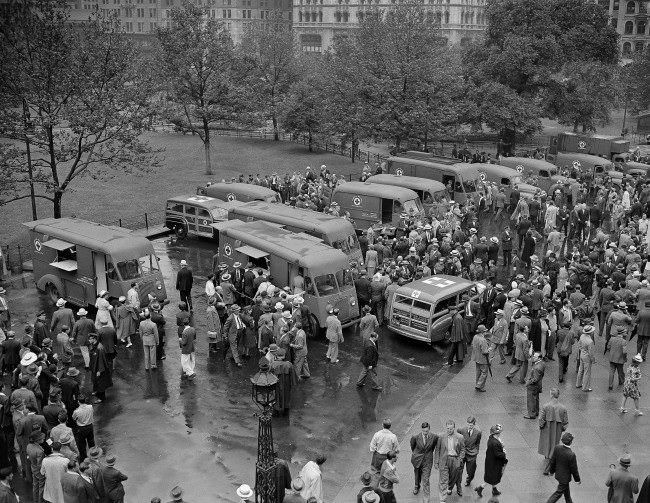
This equipment is especially designed for use following an air raid. The mobile canteens are capable of serving 150 meals an hour. The Red Cross expects to have similar units for all the larger cities in the country. The vehicles were accepted for the Red Cross by Norman H. Davis, national chairman.
#19 Red Cross workers, demonstrating one of the five mobile canteen units acquired for relief work in the event Washington has an air raid, stop by the Capitol on June 18, 1942, and dish up mugs of coffee for Senator Joseph C. O’Mahoney, left, (D-Wyo.) and Rep. Edith Nourse Rogers, right, (R-Mass.).
#20 A mobile canteen is presented in London by the Buffalo, N.Y., branch of the Aid to Britain organization on Jan. 4, 1943.
#21 A busy scene in the LegionÂs dockside hut headquarters in London, Feb. 27, 1943 as mobile canteen drivers and helpers load up trays of rolls for the midmorning lunch they serve to dock laborers.
#22
#23
#24 Red Cross worker Marie Salcheider, of St. Paul, Minn., fills vats with freshly made coffee, at a base in Dutch New Guinea on Oct. 23, 1944. The coffee will be transported in mobile canteens to isolated areas.
#25
#26 London landmarks & Buildings – Clapham Deep Shelter: Home Office Tunnel Shelters at Clapham – A canteen in one of the shelters.
#27 Deep in tubes underneath underground railway lines in London shelters provide safety from buzz bombs, July 25, 1944. They crowd around the canteen cash desk to get receipts for money spent in the canteen on refreshments
#28 Young Londoners, in a shelter against Hitler’s robot bombs, crowd the canteen for refreshments, deep under the city of London, July 25, 1944. When completed, the shelters will provide sleeping accommodations for 40,000 persons.
#29 Housed in 20 underground tunnels Âsomewhere on the West Coast of England several hundred women are turning out war materials in complete safety from air raids.
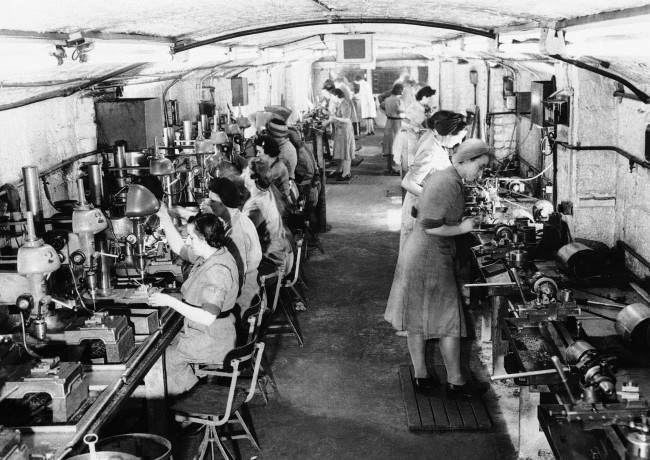
The tunnels were discovered by the owners of the firm, Wilkie Engineers, Ltd., when the foundations of A.B.C., seaside resort were being laid. Long afterward, when the company charted marking materials for the war, the tunnels were converted into a complete factory. In addition to the working rooms, the underground factory includes a canteen, sun ray room, rest room, games room and a night club with bar. A section of the factory in England April 11, 1944. Community singing goes on while the women work.
#30 Time out for a cup of tea during a five-minute morning break in the underground factory in England April 11, 1944.
#31 Lunchtime in the underground factoryÂs canteen in England April 11, 1944. Most of the workers are women. The benches are pews from a nearby bombed out church.
#32
#33
#34 A lady operates a semi-mobile canteen on the streets of Coventry following Lord Woolton’s statement that the Ministry of Food had completed arrangements for feeding 20 percent of the population of Great Britain and Northern Ireland in the event of an emergency.
#35
#36 Red Cross worker Roxane Pollack (right), of Philadelphia, Pa., hands coffee and doughnuts to Pfc. Marvin Clover, of Clayton, Ala., as he stands guard at his gun position on the fringe of a Dutch New Guinea air base on Oct. 23, 1944. Mobile canteen of the Red Cross is mode of transportation of the food.
#37 Violet Attlee, wife of the Deputy Prime Minister, prepares to go out in her Y.M.C.A. canteen, in London, on Feb. 9, 1944.
#38 Following attendance at pontifical mass in St. Patrick’s Cathedral in New York on Feb. 28, 1943, one hundred sailors from the French battleship Richelieu were guests at the Cathedral Canteen, 17 East 51st Street.
#39 A canteen presented by the people of Canada to the London home guard is set up alongside a bomb-shattered building in London on Dec. 28, 1942.
#40 This is the canteen in one of London new deep underground air raid shelters, Oct. 20, 1942.
#41 London’s new tunnel shelters, built below tube stations, are now practically completed.
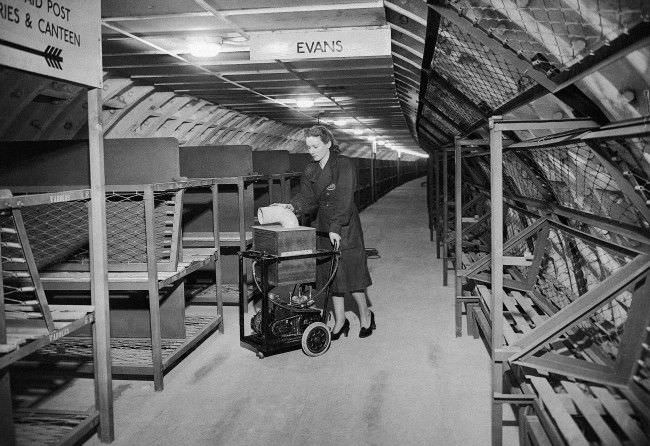
There are to be eight of them, and it is hoped that seven will be ready by the autumn. They will provide security for 8,500 people in each of the shelters, which are equipped with canteens. Recreation space, sick bays and isolation wards. It is unlikely that any further shelters of this type will be constructed owing to lack of time and materials. A view in one of the new deep shelters in London Sept. 18, 1942. The special cleaning machine employed is in use. The name of the bay of the shelter (each has its indivual name) and the endless tiers of bunk stretching as far as the eye can see.
#42
#43
#44 In order to fill the big demand for cooks in canteens and in other places, Britain is training men and women in school throughout the land.
#45 An all-Norwegian Fighter Squadron equipped with Spitfires is now flying with the Royal Air Force. It has been in action since March this year and is doing fine work.
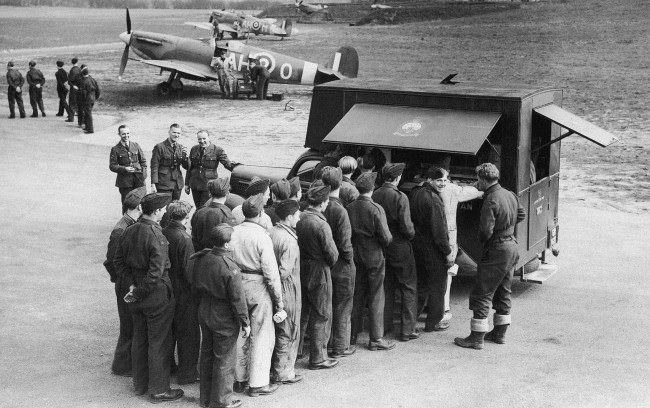
Many members of the Squadron can tell thrilling stories of their escapes from their native country to take up arms again in Britain. The Norwegian Air Force, which is commanded by Rear Admiral Hjalmar Riiser-Larsen, the famous explorer, is trained in Canada, and then comes to this country for final training and to take up operational duties. Men of the Norwegian ground staff line up for refreshments at the mobile N.A.A.F.I. canteen in the Spitfire dispersal area, May 18, 1942.


